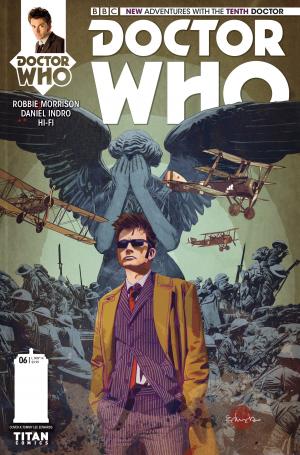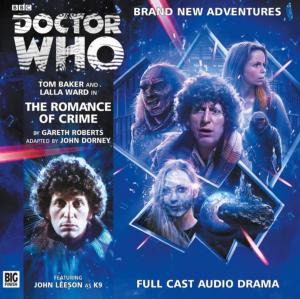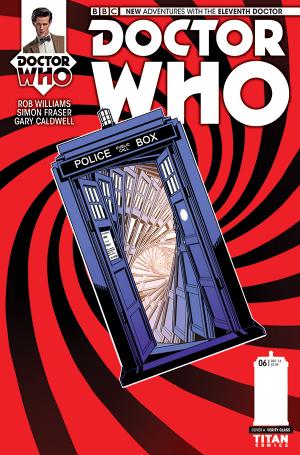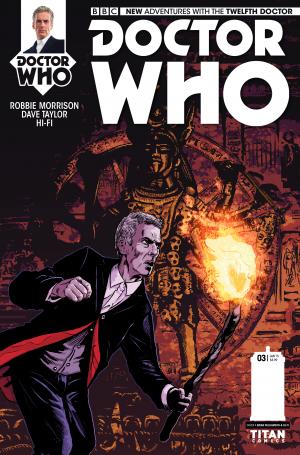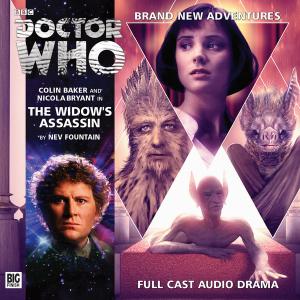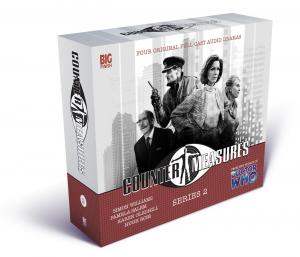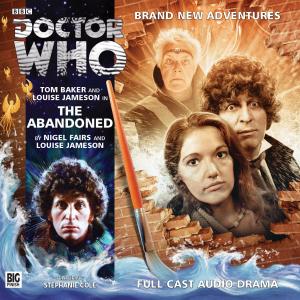The Weeping Angels of Mons - Part One
LETTERER -RICHARD STARKINGS AND COMICRAFT’S JIMMY BETANCOURT;
After a chilling pre-titles sequence set mere weeks into the First World War and featuring a pair of young British soldiers, this new story picks up again several years on during the Battle of the Somme. The Tenth Doctor and Gabriella Gonzalez are seemingly thrown into an all too familiar and haunting source of peril - following their somewhat bizarre first two escapades together. The TARDIS is quickly put out of commission by one of the more potent forms of artillery available in the early 20th century, and the Doctor sustains an injury that forces him to rely on his young friend's initiative and bravery. Although they manage to stay on the side of the battle where the British have control, their presence as casually dressed civilians is naturally viewed with suspicion. But the military trial system is the least of anyone'sworries as a terrifying foe that operates on time itself has come back to haunt the Doctor once again.
The creative team has an overhaul in this new multi-part story for the Tenth Doctor and Gabby. Robbie Morrison who has been behind the recent Twelfth Doctor stories now gets to show his creativity with the iconic former incarnation of the Time Lord. Artist Daniel Indro makes his debut for Titan's Doctor Who line; his track record including famous characters 'Sherlock Holmes' and 'The Green Hornet'. For those drawn to this edition by the superlative cover it is worth clarifying that Tommy Lee Evans is the person responsible, but the overall standard in the main content is by no means inferior - just markedly different in style.
Some enemies from Doctor Who are made just as intimidating in comic strip form as they in the parent TV format. I believe the Weeping Angels are one such successful translation. The sudden change of expression from any given panel to the next being distinctive and imposing. Even to this day they are arguably Steven Moffat's finest villainous creation. Just to recap on their unique style: a simple touch from any of the stone statues is enough to send a person back in time to live out the rest of their life, but sometimes in a manner which makes that remaining lifetime a cruel form of imprisonment. There is also the certainty that the victim never gets to meet anyone they cared for again in their 'normal' lifespan. Doubly obstructive is the Angels' capacity to turn to impervious stone when being observed, with any 'blink' allowing them to advance so much faster than a normal sentient being would in that fraction of a second.
But while it is good to have the Angels back, it is somewhat more jarring to have such a change in style after two very successful stories that balanced darkness and light ably. This story is incredibly grim, and while that may be appropriate for the dark time that was the Great War, there is not even some black humour included as a concession. Some of the minor characters are not drawn terribly well and seem rather overshadowed by the premise and the setting. Still, the first person narration from Jamie - a British corporal - makes him by far the best original guest character. He seems astute enough to bond with his fellow soldiers and know their key attributes. Captain Fairbairn is serviceable also, if a little too routine in his mistrust of the Doctor and Gabby. Perhaps there is something more to him though that later instalments can offer?
Another difficulty lies in distinguishing one uniformed character from another. There is not enough in terms of different builds or facial expressions at times. However, this is just the first instalment of four and perhaps this will be remedied as the plot allows for more back-story and idiosyncrasies to filter in. I also was a bit confused by the rather spiky dynamic between the Doctor and Gabby - which perhaps hints at some further story, or altercation in the TARDIS, which preceded these current events. But the cynic in me reckons that minimal communication between prior scribe Nick Abadzis and Morrison is just as likely.
Despite all this, the reader is provided with a strong visual work overall, with backgrounds being consistently good, and the colouring suitably grey/brown for the most part. There have been better opening entries in the Tenth doctor series and also the other two Titan Who lines, but I cannot deny the potential for this story to go places and do something special. I have always been interested in historic wars, and regarded the Weeping Angels as first rank adversaries. With a bit more tweaking and clarity this story could still be one for the ages.
Bonus Humour Strips: Rather in keeping with the main feature, these are just a touch below-par this month. 'To Heck and Back - Part Two' by AJ takes the decent opening and goes a little too far in defusing the original tension that featured when the Doctor took on the 'Beast' with the power of voice alone. The demonic entity seems to have morphed into a rather cuddlier type of alien and barely manages to make a dent when replying to a supremely confident Time Lord. The story ends up feeling pointless, and lacking the right brand of satire.
The latest 'Rose By Any Other Name' - from writer/artist Rachael Smith - has still enjoyably vibrant art and a truly lovable feline protagonist to rival K9. But the conceit that this cat would liken human being Rose to any type of household pet simply evokes a raised eyebrow rather than a chuckle.

